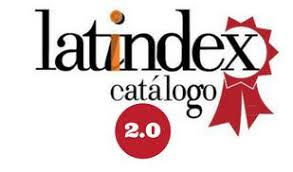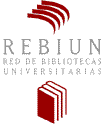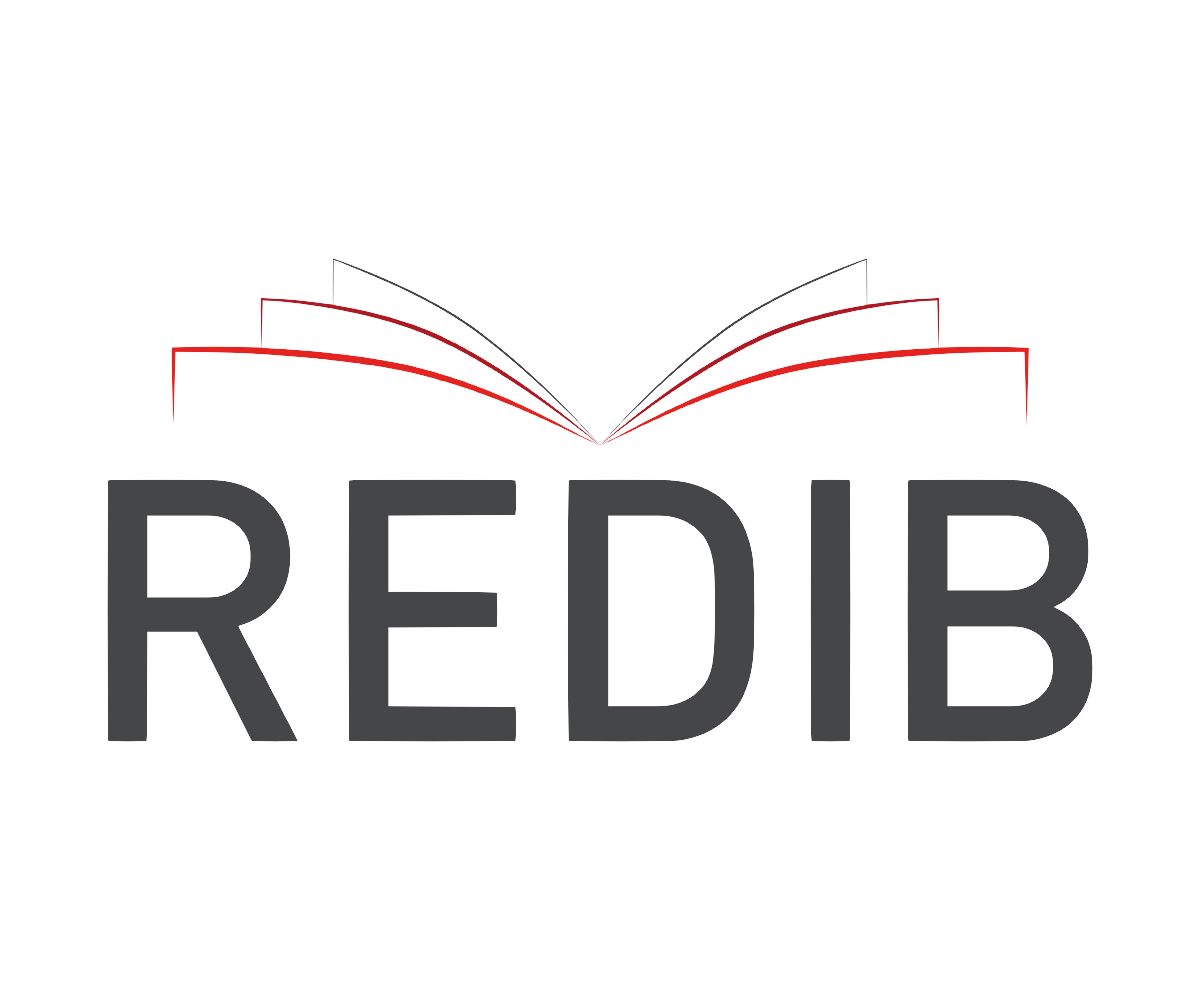Cost-benefit analysis of strategies for energy efficiency in housing, applying current regulation in Northwest Mexico
DOI:
https://doi.org/10.22320/07190700.2024.14.02.03Keywords:
climate change, housing, electric power, standardization, energy consumptionAbstract
Climate change has disproportionately affected the most vulnerable sectors, and energy efficiency in buildings emerges as a key to mitigate and adapt to these effects. In Mexico, hot dry climates predominate in 53% of the territory, especially in the north, and although there are regulations for energy efficiency in buildings, they have a limited impact. This study evaluates the costs and benefits of said regulations considering ordinary homes in different climates in a state in northern Mexico, analyzing 180 models and concluding that complying with the regulations would increase the cost of housing by 1.93%, reduce electricity consumption by 26% and decrease CO2e emissions by 16.95%. These benefits were obtained without changing the most used construction systems, and prioritizing shading systems. The results can guide public policies that are more appropriate to local contexts.
Downloads
References
Comisión Federal de Electricidad (CFE). (1 de agosto de 2024). Esquema tarifario vigente. https://App.Cfe.Mx/Aplicaciones/CCFE/Tarifas/TarifasCRECasa/Casa.Aspx
Comisión Nacional para el Uso Eficiente de la Energía (CONUEE). (2017). Costos y beneficios de la Norma Oficial Mexicana para envolvente de edificaciones residenciales (NOM-020- ENER). https://www.gob.mx/cms/uploads/attachment/file/234755/Impacto_NOM-020-junio-2017-FINAL.pdf
Comisión Nacional para el Uso Eficiente de la Energía (CONUEE). (2024, August 1). Porcentaje de hogares con aire acondicionado. Indicadores estatales de eficiencia energética. https://www.biee-conuee.net/datamapper/indicadores-para-todos-los-estados/#tasa-equipamiento-aire-acondicionado.html
Contreras, M., Serrano-Medrano, M., y Masera, O. (2022). Patrones de consumo energético en el sector residencial de México: un análisis desde la perspectiva de usos finales. Taller hojarasca. https://conahcyt.mx/wp-content/uploads/pronaces/micrositios/energia_y_cambio_climatico/energia/cuadernos_tematicos/Cuaderno_Tematico_I_Pronaces_ECC_ISBN_final.pdf
Convenio de Colaboración Para Apoyo Tarifario Para El Estado de Sonora (2024). http://sil.gobernacion.gob.mx/Archivos/Documentos/2023/12/asun_4672056_20231204_1701195008.pdf
DURÁN, R. J., y CONDORI, M. A. (2021). Alcance de la Tarifa Social sobre los hogares en situación de pobreza energética de la Argentina urbana en el periodo 2016–2018. Estudios Socioterritoriales, Revista de Geografía, 29(075), 1–28. https://ri.conicet.gov.ar/handle/11336/170441
GARCÍA OCHOA, R. (Coord.). (2022). Pobreza energética. Visiones de América Latina. El Colegio de la Frontera Norte y El Colegio de Michoacán. https://libreria.colef.mx/detalle.aspx?id=7919
García Ochoa, R. G., AVILA-ORTEGA, D. I., y CRAVIOTO, J. (2022). Energy services’ access deprivation in Mexico: A geographic, climatic and social perspective. Energy Policy, 164, 112822. https://doi.org/10.1016/j.enpol.2022.112822
GUÍZAR DENA, A. J., PASCUAL, M. Á., y FERNÁNDEZ BANDERA, C. (2021). Building Energy Model for Mexican Energy Standard Verification Using Physics-Based Open Studio SGSAVE Software Simulation. Sustainability, 13(3), 1521. https://doi.org/10.3390/su13031521
HERNÁNDEZ, M. F., AGUAYO, L.F., y DUQUE, H. (2018). Índice de pobreza energética multidimensional por regiones para Colombia, Economía Coyuntural, 3(3), 35–72. http://www.scielo.org.bo/scielo.php?script=sci_arttext&pid=S2415-06222018000300003&nrm=iso
HUELSZ, G., BARRIOS, G., y ROJAS, J. (2014). Differences on Results from Steady-state and Time-dependent Wall/roof Heat Transfer Models in Mexican Climates. Energy Procedia, 57, 1825–1833. https://doi.org/10.1016/j.egypro.2014.10.046
Instituto Nacional de Ecología y Cambio Climático (INECC). (2022). Atlas Nacional de Vulnerabilidad al Cambio Climático. Proyecciones de Cambio Climático y Fichas Climáticas Por Estado y Municipios Más Vulnerables. https://atlasvulnerabilidad.inecc.gob.mx
Instituto Nacional de Estadística y Geografía (INEGI). (2018). Encuesta Nacional sobre Consumo de Energéticos en Viviendas Particulares (ENCEVI). https://www.Inegi.Org.Mx/Programas/Encevi/2018/.
Instituto Nacional de Estadística y Geografía (INEGI). (2020). Encuesta Nacional de Vivienda. ENVI 2020. https://www.inegi.org.mx/programas/envi/2020/
Instituto Nacional de Estadística y Geografía (INEGI). (2022). Encuesta Nacional de Ingresos y Gastos de los Hogares. ENIGH 2022. https://www.inegi.org.mx/programas/enigh/nc/2022/
Instituto Nacional de Estadística y Geografía (INEGI). (2024, August 1). Geografía y Medio Ambiente. Climatología. https://www.Inegi.Org.Mx/Temas/Climatologia/#mapas.
Intergovernmental Panel on Climate Change (IPCC). (2023). Climate Change 2022 – Impacts, Adaptation and Vulnerability. Cambridge University Press. https://doi.org/10.1017/9781009325844
International Energy Agency (IEA). (2022). World Energy Outlook 2022. https://www.iea.org/reports/world-energy-outlook-2022
International Energy Agency (IEA). (2023). World Energy Outlook 2023. https://www.iea.org/reports/world-energy-outlook-2023
LÓPEZ-DÍAZ, F., NAVA ASSAD, Y. S., ROJAS BARAJAS, M., y GONZÁLEZ TERRAZAS, D. I. (2022). Guía de Escenarios de Cambio Climático para Tomadores de Decisiones. Instituto Nacional de Ecología al Cambio Climático (INECC). http://140.84.163.2:8080/xmlui/handle/publicaciones/395
MARTIN-DOMINGUEZ, I. R., RODRIGUEZ-MUÑOZ, N. A., ROMERO-PEREZ, C. K., NAJERA-TREJO, M., y ORTEGA-AVILA, N. (2018). Analysis of the Methodologic Assumptions of the NOM-020-ENER-2011—Mexican Residential Building Standard. Environments, 5(11), 118. https://doi.org/10.3390/environments5110118
MÉNDEZ, F. M., ROSA, P. C., y CASTELAO CARUANA, M. E. (2021). Pobreza energética en la Argentina actual. Revisiones y aportes metodológicos para su medición cuantitativa y cualitativa. Ciencia, Docencia y Tecnología, 32(62). https://doi.org/10.33255/3262/748
NMX-C-460-ONNCCE-2009, Pub. L. No. NMX-C-460-ONNCCE-2009, Diario Oficial de la Federación (2009). https://www.dof.gob.mx/nota_detalle.php?codigo=5145106&fecha=03/06/2010#gsc.tab=0
NOM-008-ENER-2001. Eficiencia Energética En Edificaciones, Envolvente de Edificios No Residenciales., Pub. L. No. NOM-008_ENER-2001, Diario Oficial de la Federación (DOF) (2001). https://dof.gob.mx/nota_detalle.php?codigo=767644&fecha=25/04/2001#gsc.tab=0
NOM-020-ENER-2011. Eficiencia Energética En Edificaciones, Envolvente de Edificios Residenciales., Pub. L. No. NOM-020-ENER-2011, Diario Oficial de la Federación (DOF) (2011). https://dof.gob.mx/nota_detalle.php?codigo=5203931&fecha=09/08/2011#gsc.tab=0
PANCA, C.-O., y CALATAYUD, A.-P. (2021). Determinantes socioeconómicos y transición de la pobreza energética de los hogares en la sierra rural del Perú, periodo 2010-2019. Semestre Económico, 10(2), 72–85. https://doi.org/10.26867/se.2021.v10i2.121
RESOLUCIÓN Por La Que Se Modifican Los Valores de Coeficiente Global de Transferencia de Calor (K) de La Tabla 1, Se Agregan Definiciones y Se Acota La Verificación de La Norma Oficial Mexicana NOM-020-ENER-2011, Eficiencia Energética En Edificaciones. Envolvente de Edificios Para Uso Habitacional, Publicada El 9 de agosto de 2011., Pub. L. No. NOM-020-ENER-2011, Diario Oficial de la Federación DOF (2016). https://www.dof.gob.mx/normasOficiales/6154/sener11_C/sener11_C.html
RODRÍGUEZ, O. DE B., (2018). Energía y Edificaciones en México: Importancia y políticas públicas resentes y futuras. Cuaderno de la CONUEE No.10. https://www.conuee.gob.mx/transparencia/boletines/Cuadernos/cuadernoNo.10.pdf
RODRÍGUEZ, O. DE B., NAVARRETE, J., y HERNÁNDEZ, P. (2022). Pobreza energética en México y efectos de política pública en eficiencia energética de 1996 a 2016. In R. García Ochoa (Ed.), Pobreza energética. Visiones de América Latina (1st ed., pp. 1–270). Coordinación de Publicaciones de El Colegio de la Frontera Norte.
ROMERO MORENO, R. A., BOJÓRQUEZ MORALES, G., VÁZQUEZ TÉPOX, J. E., GONZÁLEZ CRUZ, E. M., OCHOA DE LA TORRE, J. M., RESÉNDIZ PACHECO, O., GÓMEZ AZPEITIA, L. G., PÉREZ SÁNCHEZ, M. M., y TEJEDA MARTÍNEZ, A. (2020). Caracterización de la vivienda económica en México. En R. A. ROMERO MORENO y J. M. OCHOA DE LA TORRE (Eds.), Confort térmico y ahorro de energía en la vivienda económica en México: regiones de clima cálido seco y húmedo (1st ed., pp. 1–359). Universidad de Sonora y Universidad Autónoma de Baja California.
SANTILLÁN, O. S., CEDANO, K. G., y MARTÍNEZ, M. (2020). Analysis of energy poverty in 7 Latin American countries using multidimensional energy poverty index. Energies, 13(7), 1608. https://doi.org/10.3390/en13071608
Secretaría de Energía (SENER). (2023). Balance Nacional de Energía 2022. https://www.gob.mx/sener/articulos/balance-nacional-de-energia-296106
Secretaría de Energía (SENER) y Comisión Nacional del Uso Eficiente de la Energía (CONUEE). (2024, February 3). Indicadores estatales de eficiencia energética. Gastos en energía por hogar. Gastos En Energía Por Hogar. https://www.biee-conuee.net/datamapper/#gastos-energia-por-hogar.html
Secretaría de Medio Ambiente y Recursos Naturales (SEMARNAT). (2024a, February 29). Factor de Emisión del Sistema Eléctrico Nacional, 2023. https://www.Gob.Mx/Cms/Uploads/Attachment/File/896217/Aviso_fesen_2023.Pdf.
Secretaría de Medio Ambiente y Recursos Naturales (SEMARNAT). (2024b, July 15). Atlas Digital Geográfico. Atlas Digital Geográfico. https://gisviewer.semarnat.gob.mx/aplicaciones/Atlas2015/atm_climas.html
SIKSNELYTE-BUTKIENE, I., STREIMIKIENE, D., LEKAVICIUS, V., y BALEZENTIS, T. (2021). Energy poverty indicators: A systematic literature review and comprehensive analysis of integrity. Sustainable Cities and Society, 67, 102756. https://doi.org/10.1016/j.scs.2021.102756
Downloads
Published
How to Cite
Issue
Section
License
Copyright (c) 2024 Cecilia Galindo-Borbón, Ana Borbón-Almada, José M. Ochoa-de-la-Torre, Irene Marincic-Lovriha

This work is licensed under a Creative Commons Attribution-ShareAlike 4.0 International License.
The content of articles which are published in each edition of Habitat Sustentable, is the exclusive responsibility of the author(s) and does not necessarily represent the thinking or compromise the opinion of University of the Bio-Bio.
The author(s) conserve their copyright and guarantee to the journal, the right of first publication of their work. This will simultaneously be subject to the Creative Commons Recognition License CC BY-SA, which allows others to share-copy, transform or create new materials from this work for non-commercial purposes, as long as they recognize authorship and the first publication in this journal, and its new creations are under a license with the same terms.

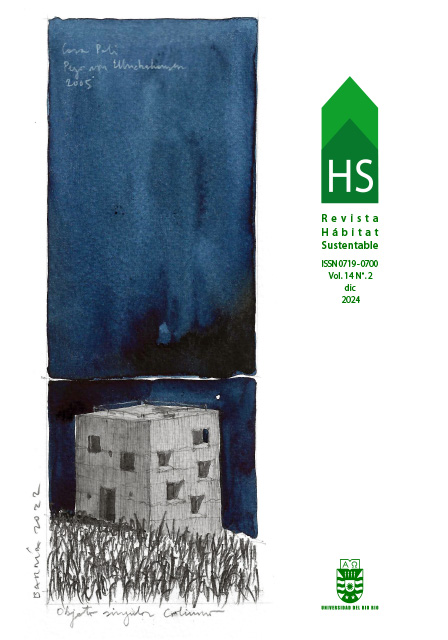
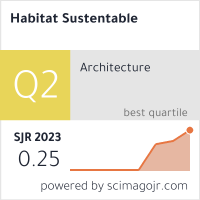

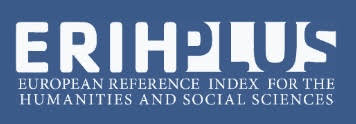




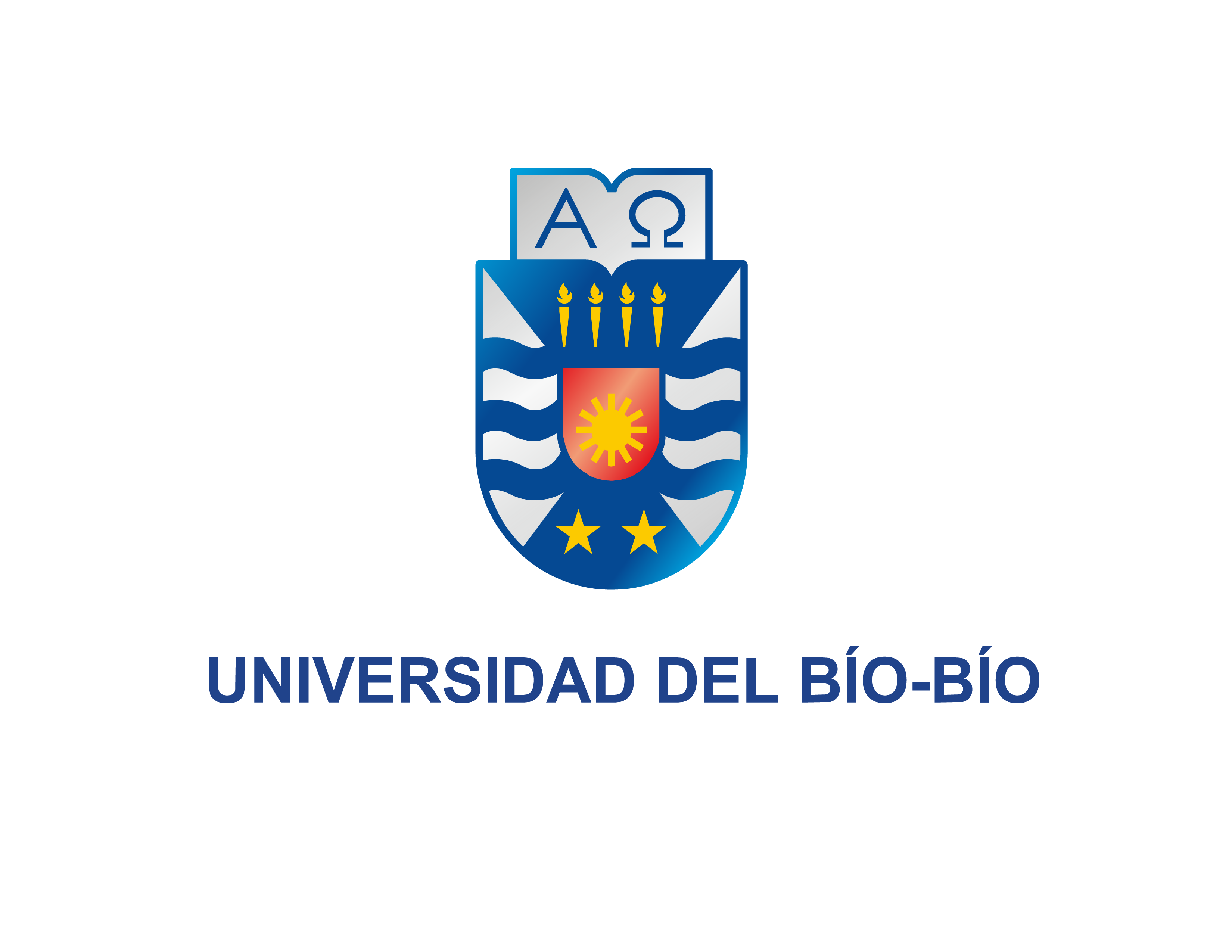

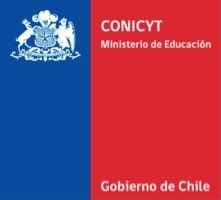 Scientific Information Program/Concurso Fondos de Publicación de Revistas Científicas 2018/ Proyecto Mejoramiento de Visibilidad de Revistas UBB (Código:FP180007).
Scientific Information Program/Concurso Fondos de Publicación de Revistas Científicas 2018/ Proyecto Mejoramiento de Visibilidad de Revistas UBB (Código:FP180007).
